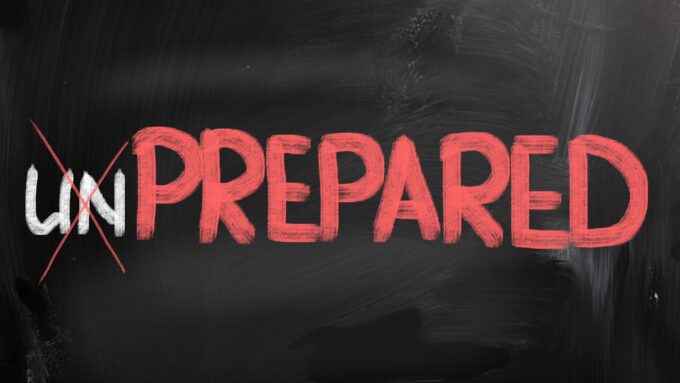Embarking on a new project is an exciting venture, but it comes with its own set of challenges. Particularly for projects with substantial costs, such as construction undertakings, a meticulous evaluation of various aspects becomes paramount for ensuring success. One critical aspect that often determines the success or failure of a project is the management of funds and how it impacts stakeholder confidence.
In this article, we’ll explore the crucial role of fund control as a cornerstone in building stakeholder confidence throughout the project lifecycle. It emphasizes how effective financial management contributes significantly to both the establishment and sustained trust in project endeavors.
Establishing a Solid Financial Foundation

At the core of ensuring both project success and stakeholder confidence lies the imperative task of building a robust financial foundation. This critical step involves meticulous financial planning, thorough budgeting, and strategic resource allocation, as noted by North American Construction Services. Without this foundational planning, businesses across various sectors, including construction, are prone to failure.
Investopedia emphasizes the critical role of financial stability, revealing that approximately 20% of new businesses experience failure within the first two years. The stakes rise further, with 45% facing challenges within the initial five years and a substantial 65% succumbing within the opening decade. A mere 25% manage to sustain themselves beyond the 15-year mark.
To bolster this foundation, start by conducting a detailed analysis of the project’s scope, identifying potential costs, and creating a realistic budget. Transparently communicating this budget to stakeholders ensures a clear understanding of fund utilization.
For effective fund control and management throughout the project, consider outsourcing this intricate task to reputable fund control companies. Visit their websites to learn more about their expertise in this intricate field.
Rigorous Monitoring and Tracking

As the project gains momentum, meticulous monitoring and tracking of expenditures become crucial for its success. Implementing robust financial controls is essential to guarantee that the project remains within the defined budgetary constraints.
This involves a continuous process of reviewing detailed financial reports, meticulously comparing actual spending against the budget projections, and identifying any variances that may arise.
This diligent approach not only ensures the maintenance of financial discipline but also serves as a testament to transparency in project management. Regular and thorough financial assessments maintain the project on a steady financial course. This, in turn, instills confidence among stakeholders, reinforcing their trust in the project’s management capabilities.
To enhance this process, implementing robust financial controls is essential to guarantee that the project remains within the defined budgetary constraints. Leveraging cutting-edge AI technologies for monitoring and analysis can significantly contribute to the effectiveness of these controls.
Regular AI-driven financial assessments maintain the project’s financial course and enable agile decision-making. The integration of AI technologies in financial monitoring instills confidence among stakeholders. It reinforces trust in the project’s management capabilities, showcasing a commitment to using the latest tools for precision and efficiency.
Effective Communication Strategies
Transparent communication stands as a pivotal element in constructing and maintaining stakeholder confidence. Forbes reports that for more than 40% of workers, ineffective communication diminishes trust in leadership and team collaboration.
To address this challenge, project managers must regularly update stakeholders on key financial milestones. This includes providing information on adherence to the budget and addressing any encountered deviations promptly.
This proactive communication approach not only demonstrates accountability but also showcases a commitment to addressing challenges head-on while highlighting project successes.
By keeping stakeholders well-informed with transparent and timely information, project managers foster an environment of trust and collaboration. A stakeholder who is equipped with a clear understanding of the project’s financial status is more likely to maintain confidence in its ongoing progress.
This approach enhances transparency within the project. It also contributes to overall success by ensuring that all stakeholders are aligned and engaged in the shared objectives.
Contingency Planning for Unforeseen Events

As indicated by a ResearchGate study, the issue of project cost overrun looms prominently in the construction industry. Disturbingly, over 80% of construction projects face delays or exceed their budget due to various factors, including unforeseen events.
Acknowledging the inevitability of uncertainties in any project, it becomes paramount to bolster stakeholder confidence. This is achieved through the meticulous crafting of comprehensive contingency plans aimed at mitigating potential risks.
These plans provide a detailed roadmap for addressing cost overruns and unforeseen expenses, showcasing a proactive approach to risk management. The emphasis on transparency in communicating these plans to stakeholders is crucial. It not only instills confidence but also demonstrates a commitment to openness and accountability.
This transparency serves as a tangible manifestation of the project team’s dedication to financial responsibility. It reassures stakeholders about the project’s resilience in the face of uncertainties.
Ultimately, this strategic focus on transparency and proactive risk mitigation measures plays a pivotal role in fostering trust among stakeholders. By showcasing a commitment to navigating challenges effectively, the project team ensures stakeholders are informed as well as confident. This confidence extends to the project’s ability to achieve its objectives despite the complexities inherent in the construction industry.
Utilizing Technology for Enhanced Control
Harnessing technology in the modern era presents a substantial opportunity to augment both fund control and stakeholder confidence. In the financial realm, technology empowers hedge funds by facilitating real-time monitoring and management of risks through advanced risk management systems.
These systems are adept at evaluating portfolio risk, conducting stress tests, and simulating diverse scenarios to assess potential outcomes.
Furthermore, integrating project management tools and financial software into operations proves invaluable. This integration streamlines budget tracking, automates reporting processes, and offers real-time visibility into crucial financial metrics.
Beyond enhancing operational efficiency, such technological integration signifies a dedication to leveraging modern solutions for the effective management of projects.
In conclusion, fund control plays a pivotal role in building and maintaining stakeholder confidence throughout the project lifecycle. By establishing a robust financial foundation, implementing vigilant monitoring, and exercising diligence, project managers can instill trust and assurance among stakeholders.
Ultimately, a well-managed budget not only ensures project success but also enhances the reputation of the project team and organization as a whole.











